The Clean Energy Regulator (CER) published its annual National Greenhouse and Energy Reporting (NGER) data on Thursday, detailing the greenhouse gas emissions of more than 900 of Australia’s largest carbon emitters and the big energy generators have again ranked as the nation’s dirtiest companies.
AGL, which operates the coal-fired Liddell and Bayswater power stations in New South Wales’ Upper Hunter Valley and the Loy Yang power station in Victoria’s Latrobe Valley, has again ranked as Australia’s largest greenhouse gas emitter, reporting emissions of 42.2 million tonnes in the 2019-20 financial year.
Greenpeace Australia Pacific senior coal campaigner Glenn Walker said the figures were not only a blight on AGL, which has publicly stated it is aiming to reach net zero emissions by 2050, but the industry as a whole.
“Australians are on the frontline of the climate crisis which is primarily driven by the mining and burning of coal, and now AGL has emerged as the biggest climate polluter in the country,” he said.
“Australians who get their energy from AGL have done so in good faith, trusting that AGL is living up to the marketing reputation it has created, but this data reveals that behind the sleek, modern veneer AGL is still using dirty and dated methods to provide Australians with electricity.”
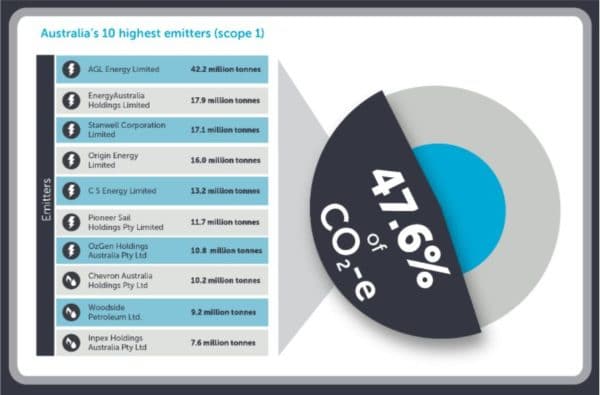
Image: CER
The NGER data reveals AGL, which earlier this month revealed a stunning $2.69 billion write-down to its asset value, is responsible for 24.6% of electricity sector emissions and 8% of Australia’s total emissions and its total emissions is more than double the next highest emitter.
EnergyAustralia, which owns the Yallourn power station in Victoria and the Mt Piper power station in NSW, is second on the list of Australia’s 10 largest emitters with 17.9 million tonnes of carbon emissions in the past year.
Stanwell Corporation, which operates the Stanwell and Tarong North power stations in Queensland was ranked third with 17.1 million tonnes while Origin Energy, which operates the Eraring power station in NSW, the nation’s largest coal-fired power station, was fourth with 16.0 million tonnes.
While the electricity generation sector remained the largest emitting industry in Australia, accounting for 47.9% of all emissions reported, 2019–20 was the second consecutive year that emissions from the sector were less than 50% of the 327 million tonnes of scope 1 emissions reported.
The CER said emissions in the electricity generation sector have decreased over the past four years. There were notable reductions of 4.8 million tonnes (2.9%) of carbon dioxide equivalents in 2018–19 and 7.5 million tonnes (4.6%) of CO2-e in 2019–20 on the previous reporting year. The CER said this reduction is largely due to the increased penetration of renewable energy, including solar, and the decreased use of black coal.
The total reported scope 1 emissions declined by 3% or 10.1 million tonnes in 2019-2020, a decline largely attributed to decreases in emissions from electricity generation and oil and gas production but Walker said AGL still had a long way to go to achieve its Climate Statement.
Data provided by AGL confirms that 85% of energy generated by the gentailer comes from its three large coal-burning power stations. Liddell is set to close fully by 2023, but Bayswater is not set to close until 2035 and Loy Yang A is set to close by 2048.
“Two out of three of AGL’s coal-burning power stations are set to close well beyond what scientists are calling for in order to prevent further catastrophic climate change,” Walker said.
“In order to protect Australians from the worsening impacts of climate change, all of AGL’s coal-burning power stations need to close by 2030 at the latest and be replaced by clean and safe renewable energy.”
In a statement provided to pv magazine, AGL acknowledged the report and said it “understands its responsibility as Australia’s largest energy generator and retailer to drive the transition to a cleaner energy future, while maintaining reliable and affordable energy for our customers”.
“Last year, we released our Climate Statement comprising five key commitments and our target of net zero emissions by 2050. Our statement provides an important framework that will guide our future actions and growth, recognising that customer demand, community expectations and technological advancements are the core drivers of Australia’s energy transition,” the company wrote.
“AGL’s coal fired-power stations play an important role in an orderly and responsible transition to a cleaner energy future.
“AGL has published dates for the closure of our coal-fired power stations. We remain committed to these and the transition plans while progressing investments for projects that transition our portfolio.”
Mining was the second largest emitting sector with 29.4% of all emissions while manufacturing produced 15.0% of all emissions for 2019-2020.
Emissions from the agricultural, forestry, private vehicle transport and residential sectors are not collected under the NGER scheme and were not included in the data.
This content is protected by copyright and may not be reused. If you want to cooperate with us and would like to reuse some of our content, please contact: editors@pv-magazine.com.
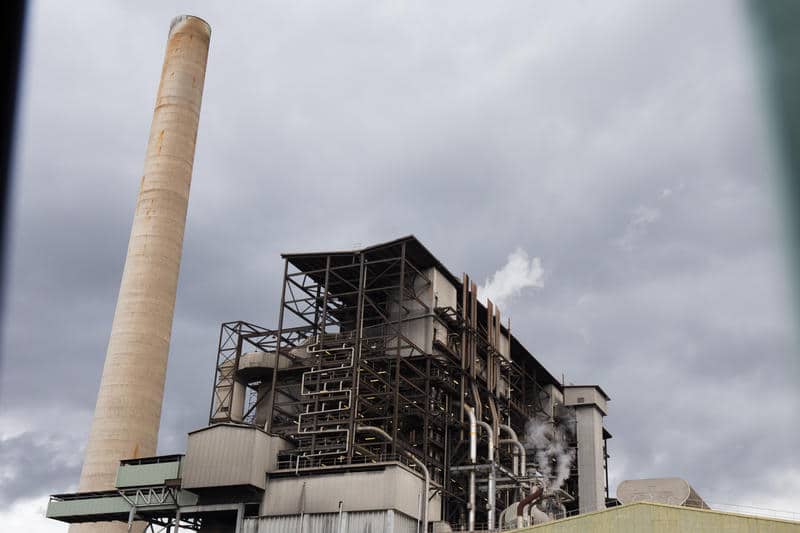
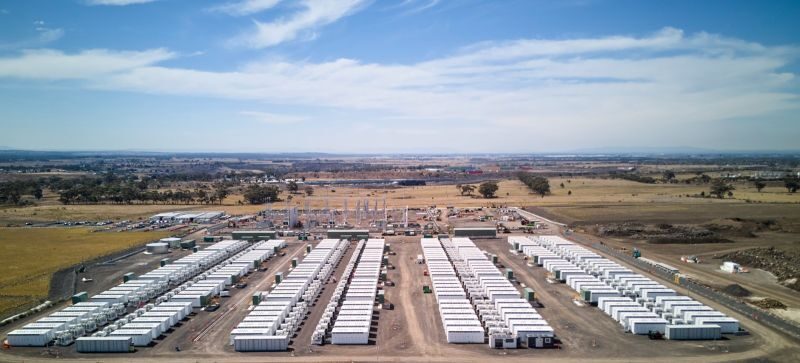


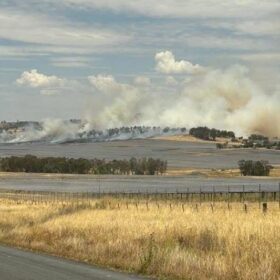
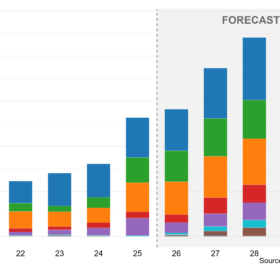
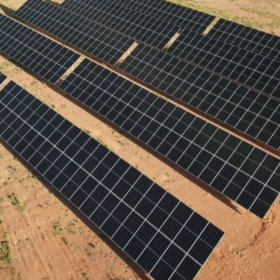
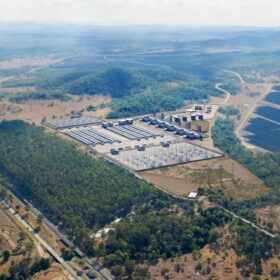
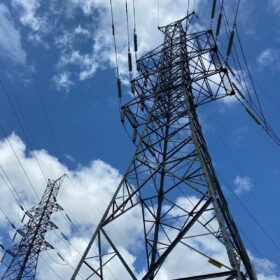
“Emissions from the agricultural, forestry, private vehicle transport and residential sectors are not collected under the NGER scheme and were not included in the data.”
What’s the use of a report that ignores these important polluters? Its a bit harsh on AGL to say they are the worst polluters of so some of the polluters.
It is interesting to note that Emissions from Power Plants alone are considered and NOT Vehicles etc…. hiding a major Culprit behind Pollution … specially in urban areas.
By removing Vehicles it creates two problems… one is Vehicles keep emitting and polluting… remember all those polluting Oil/Gas Wells, Refineries etc…. that add further “spice to the pollution mess”….
The Zero Pollution Target using Solar/RE just focuses on eliminating Power Plants…. and also forget that as the Polluting Industries and Transportation Sectors switch to Clean Solar… where will the Electricity come from as the PV System “forgot this” conversion as it focussed solely on replacing Power Plants.
and…. many many EAO’s (Elected and Appointed Officials) remain smug as they applaud in replacing theit 8000hrs/yr Polluting Olants with 1200hrs/yr Solar Panels…. as Pollution just grows… and grows… and grows…